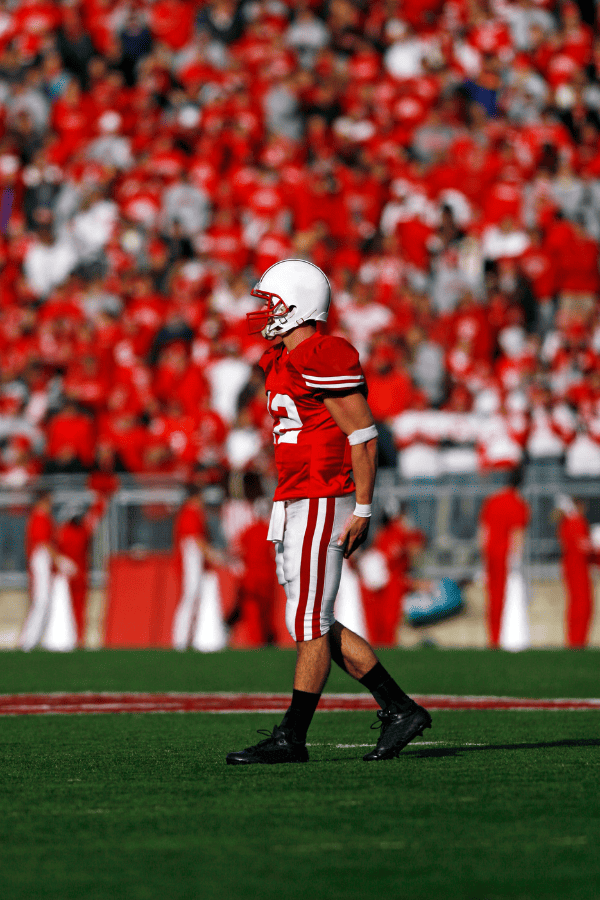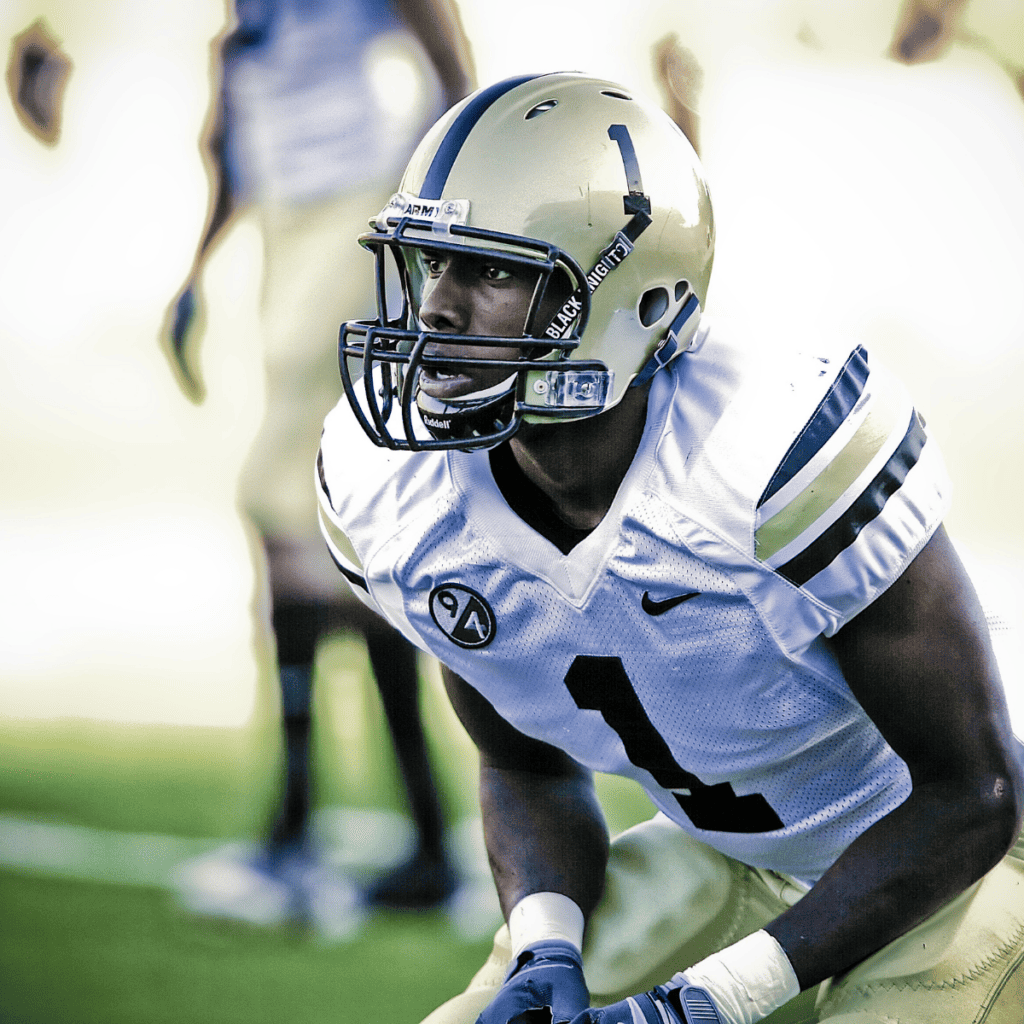What Do Defensive Backs Do? (Beginners Guide)
Football, a game celebrated for its complex strategies and exhilarating plays, wouldn’t be the same without the pivotal role of defensive backs. These athletes, often overlooked in the shadow of quarterbacks and wide receivers, are the guardians of the gridiron, ensuring that the opposing team’s pass offense meets a formidable challenge.
The dynamic role they play is crucial to a team’s defense, blending speed, strategy, and sheer athletic prowess.
The Basics of Being a Defensive Back
At its core, the role of a defensive back is to defend against the pass offense of the opposing team. This involves preventing wide receivers from catching the ball and making tackles as necessary. The defensive backfield is typically comprised of cornerbacks, safeties, and, in certain formations, a position known as the nickel back.
Cornerbacks are primarily responsible for covering wide receivers. Their main objective is to either prevent a pass from being caught or tackle the receiver immediately after a catch. Speed, agility, and the ability to read the game play a crucial role in their effectiveness.
Safeties, divided into free safeties and strong safeties, provide the last line of defense. Free safeties are like the field marshals, positioned to defend against deep passes and assist cornerbacks. Strong safeties, on the other hand, are more involved in stopping the run and may also cover tight ends and running backs.

The nickel back enters the game in certain passing situations, adding an extra layer of defense against the pass. This position requires versatility, as they must be adept at covering receivers, tackling, and occasionally rushing the quarterback.
Each of these roles requires a unique blend of skills and physical attributes, making the position of defensive back one of the most challenging and diverse in football. A defensive back must not only be fast and agile to keep up with quick-footed receivers but also possess the intelligence to read and anticipate the opponent’s plays.
Skills and Attributes of a Top Defensive Back
A top defensive back is a combination of various skills and attributes. Agility and speed are non-negotiable; they need to match or surpass the swiftness of the receivers they cover. Intelligence is equally vital; a defensive back must quickly analyze formations and predict plays, often in a split second. Height can be advantageous for contesting passes, while strength aids in tackling and physical confrontations.
Mental attributes like strategic thinking and game awareness are just as crucial. A defensive back must understand offensive strategies and adjust their approach accordingly. They need to be quick thinkers, able to make rapid decisions based on the evolving dynamics of the game.
The Art of Defense: Techniques and Strategies
Defensive backs employ a variety of techniques and strategies to counteract the offensive plays. Man-to-Man Coverage involves a defensive back shadowing a specific receiver, trying to prevent them from catching the ball. This technique requires excellent speed, agility, and the ability to anticipate the receiver’s movements.

Zone Coverage, on the other hand, assigns a defensive back a specific area of the field to defend. This strategy is less about individual matchups and more about understanding the overall play and being in the right position to disrupt passes.
Reading the Offense is a critical skill. This involves anticipating the quarterback’s intentions and the route of the receivers. A well-timed interception or pass breakup by a defensive back can change the momentum of the game.
Read More:
Impact on the Game
Defensive backs significantly impact the game through their actions. Interceptions can halt an opponent’s drive or even lead to a score for the defending team. Effective tackling prevents receivers from gaining extra yards after the catch and can stop crucial third-down conversions. Defensive backs also play a critical role in preventing touchdowns, especially in high-pressure situations like the red zone defense.
Their adaptability is another crucial aspect. As offenses evolve and introduce new strategies and formations, defensive backs must adjust their techniques and coverage styles. This constant adaptation keeps the game dynamic and challenging.
Training and Preparation
Physical training for a defensive back is rigorous. It focuses on enhancing speed, agility, and strength – all necessary to keep up with the physical demands of the position. Drills to improve footwork, tackling techniques, and endurance are common.
Mental preparation is equally important. This includes studying game film to understand opponents’ tendencies and developing game intelligence. Defensive backs spend considerable time learning about different offensive strategies and how to counteract them. This preparation is as much a part of their success as their physical prowess.
The life of a defensive back is one of constant learning and physical challenges. They are the silent sentinels of the football field, whose actions often dictate the tempo and outcome of the game.
Famous Defensive Backs and Their Legacy
The history of football is graced with legendary defensive backs whose impact on the game is undeniable.
Players like Deion Sanders and Ronnie Lott are celebrated not just for their athletic prowess but for revolutionizing the position. Sanders, known for his incredible speed and agility, was a nightmare for receivers, while Lott’s physicality and intelligence made him one of the most feared safeties in NFL history.
In the modern era, names like Jalen Ramsey and Tyrann Mathieu have risen to prominence. They bring a unique blend of athleticism, intelligence, and versatility, proving that the position continues to evolve. Their performances on the field are not just a display of physical skill but a strategic masterclass in defensive play.
Conclusion
Defensive backs are crucial players on the football field, often shaping the outcome of the game with their skills and strategic play. They are the heroes who guard the end zone with tenacity and intelligence, making split-second decisions that can turn the tide of a game. Their role, though perhaps less glamorous than that of quarterbacks or wide receivers, is no less important.
As fans of the sport, we should appreciate the depth and athleticism that these players bring to the game. Watching a top-tier defensive back in action is witnessing a blend of physical excellence and strategic acumen, a combination that is the hallmark of great football.

